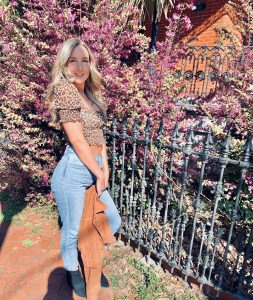February 23, 2022
- Interpret
So far in the course I’ve encountered many familiar novels I initially encountered in my undergraduate coursework. Of the selections so far, Orlando has given me the greatest sense of nostalgia from revisiting a particular text. This work by Virginia Woolf is definitely one of the most fascinating and complex character storyline’s, with the exception of some other Victorian texts (e.g. Zofloya), that lured me into pursuing an education in the literary world. Following Orlando’s path, from the many different trysts with many different women of various social standings to his waking transition as a women, I believe is very significant to modern literary commentary and historical connections of navigating class and gender roles, as well as these social structures changing as the particular time era changes. One aspect I would like to highlight in relation to this is Orlando traversing from the eighteenth-century to the nineteenth-century and the changes between the eras as a woman and what is expected, both socially and systemically. Orlando becomes starkly aware of the limits of her freedom and the powerful grip patriarchal social structures have on the outlook of her life.
- Critically Evaluate
Imitation and Gender Insubordination, Judith Butler
Orlando is loitered with significant themes that are critical to discussing a myriad of themes in literary works. Without diving into all of them, especially in regards to the supplemental reading by Butler, I found the focus of gender differences as crucial to the novel. Orlando’s transition is a critical turning point of the text and while there is some initial grappling with this change, how Orlando proceeds to navigate the performance of masculine to the feminine and the expectations, both behavioral and societal, differences of the two is central to illustrating the individual’s subconscious of those time periods. Regardless of the similarities and differences possessed by the binary gender roles, I feel the novel makes a point to show that both are ultimately subjected to the confines of these specific gender classifications through the pressures and impositions of society.
“Truth! Truth! Truth!” in Image and Text, Fact and Fiction in Virginia Woolf’s Orlando, Annalisa Federici
This supplemental reading by Annalisa Federici gave me a little more clarity when attempting to comprehend the text, and as I mention for one of the points I would like to discuss in class, is how the audience is to perceive this intermingling of reality and imagination. Similarly to how Woolf is noted in this reading to employ photographic “evidence” and would experiment with the relationships between fiction and reality, draws parallel to the storyline of Orlando as the novel comes to a close (Federici 148). I definitely find this to be an interesting narrative strategy that coincides with the story being relayed as stream of consciousness. This method in a way goes hand-and-hand with how the novel subverts ideas and constructions of reality through Orlando’s transition and turning his preconceived notions of society upside down.
- Points of Discussion for Class
What is the distinction for truth (or reality) in Orlando? I understand the majority of the novel, but the ending passages become hazy in its connection between what the character is experiencing and what is meant to be proven through imagination.
Why did Orlando seem to have the most difficulty navigating her role as a woman in the nineteenth-century? I feel women were also subjugated to societal pressures in each of the eras that were traversed during the text, so I wonder why such significance was placed on the Victorian era.

